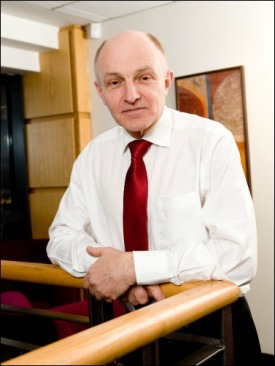Silence isn’t always golden
With thousands of other people, I attended the recent anti racism march in Belfast. As I looked around me at the gathered crowds, I couldn’t help but reflect that we are wonderfully made. Our bodies have 650 muscles, 206 bones, 100 joints, over 100,000 kms of blood vessels, 13 million nerve cells which sent impulses to our brains at almost 330kph. Our entire blood supply, 4 litres, races through our lungs once each minute. We contain enough lime to white wash a small shed, enough phosphorous to make 2000 match heads, enough iron to make a 3cm nail, and the equivalent in carbon to make up a 28kg bag of coke. Better still all these components make up a functioning body, which is much more than the sum of its parts. Yet despite these commonalities, we tend to highlight the differences.
 I have always thought that of all the body parts, the ear is one of the most extremely complex.. It keeps your glasses on and stops your hat from falling over your eyes. In addition to allowing us to hear, it has a key role in assisting our balance and orientation. Inside it, there are 23,000 hairs and fluid in order to deaden the sound of our own pulse. It is a high tech piece of equipment and can detect sound through gas, solid and liquid. It allowed me to hear over a dozen different languages as I walked.
I have always thought that of all the body parts, the ear is one of the most extremely complex.. It keeps your glasses on and stops your hat from falling over your eyes. In addition to allowing us to hear, it has a key role in assisting our balance and orientation. Inside it, there are 23,000 hairs and fluid in order to deaden the sound of our own pulse. It is a high tech piece of equipment and can detect sound through gas, solid and liquid. It allowed me to hear over a dozen different languages as I walked.
It then struck me. Given this complexity why do we so often fail to use our hearing skills properly? When we are really engaged with someone we just don’t hear them, we really listen to them. Listening leads to empathy. Over the recent past, we have seen a lack of empathy extended to people who have come here from other places. People just like us, made up of the same components. Again, we are often selective in our hearing, believing things which suit our own viewpoints, seeking out evidence which supports “our side” over “theirs”.
In the same way, the mouth is a wonderfully designed machine with many different parts that operate together to keep us alive, healthy and happy. It is not only used for eating, but also for formatting the sounds while speaking and for the expression of our feelings and emotions. Like the ears, however, we tend to limit the use of our mouths, either by saying things which can be hurtful, or by not speaking up for those who we see being marginalised or abused.
Saturday’s marchers had taken steps to speak out against racism. Some did this by carrying simple placards simply saying “combat racism” or “unite against hate”. Others had created striking masterpieces using colour to represent our increasingly multi cultural society. Many walked behind banners identifying them with a place, an organisation or group. Those who walked represented all ages, all traditions, all colours – members of the one human race.
So we now look forward to the long awaited racial equality strategy. May I suggest that you read it in full, reflect on it with care and respond to it with integrity. It will form part of the basis for how we will move ahead and build our united community. A united community in which we are all willing to challenge racism and prejudice where we find it. We cannot remain silent.
Posted on 10 Jun 2014 by
Dr Michael Wardlow